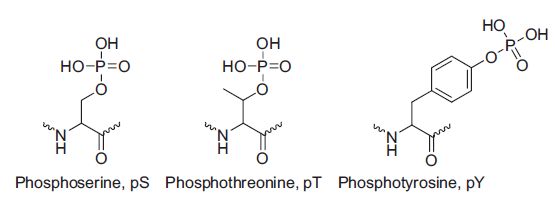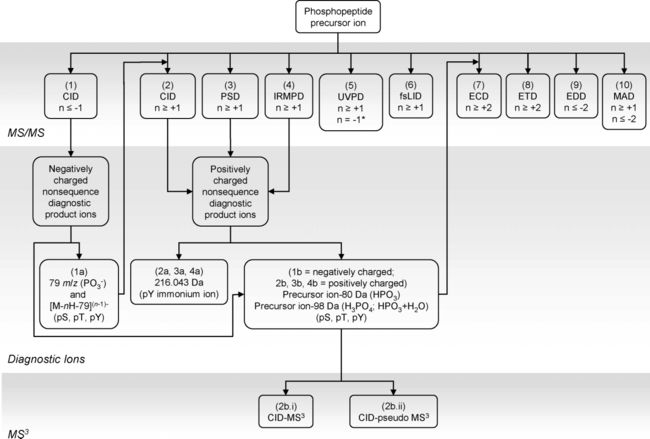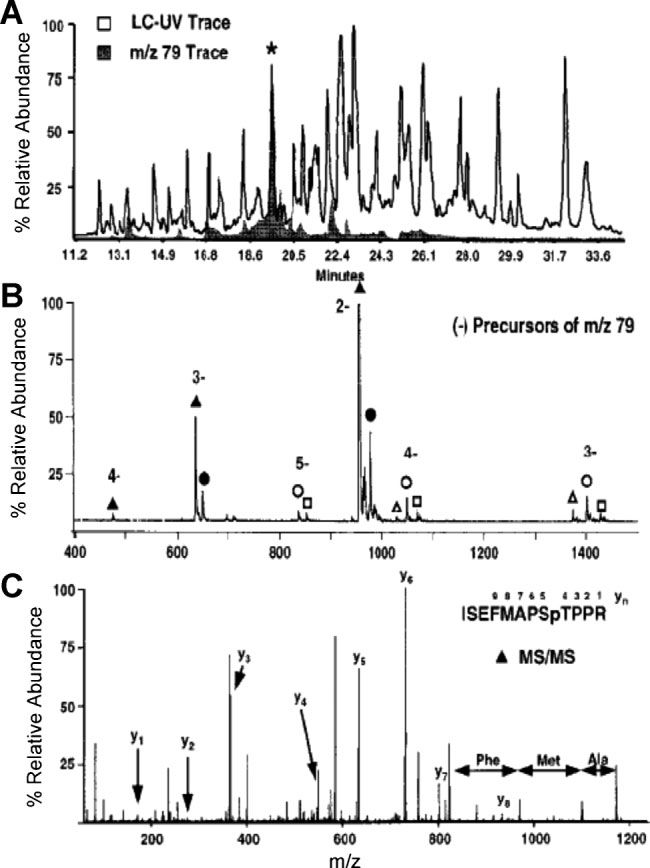- CesiumJS+SuperMap3D.js混用实现可视域分析 S3M图层加载 裁剪区域绘制
SteveJi666
WebGLcesiumEarthSDKSuperMap3djavascript前端arcgis
版本简介:cesium:1.99;Supermap3D:SuperMapiClientJavaScript11i(2023);官方下载文档链家:SuperMap技术资源中心|为您提供全面的在线技术服务示例参考:support.supermap.com.cn:8090/webgl/Cesium/examples/webgl/examples.html#analysissupport.supermap
- CesiumJS+SuperMap3D.js混用实现通视分析
SteveJi666
WebGLcesiumEarthSDKSuperMap3djavascript前端arcgis
版本简介:cesium:1.99;Supermap3D:SuperMapiClientJavaScript11i(2023);官方下载文档链家:SuperMap技术资源中心|为您提供全面的在线技术服务示例参考:support.supermap.com.cn:8090/webgl/Cesium/examples/webgl/examples.html#analysissupport.supermap
- 概率潜在语义分析(Probabilistic Latent Semantic Analysis,PLSA)—无监督学习方法、概率模型、生成模型、共现模型、非线性模型、参数化模型、批量学习
剑海风云
ArtificialIntelligence人工智能机器学习概率潜在语义分析PLSA
定义输入:设单词集合为W={ω1,ω2,⋯ ,ωM}W=\{\omega_1,\omega_2,\cdots,\omega_M\}W={ω1,ω2,⋯,ωM},文本集合为D={d1,d2,⋯ ,dN}D=\{d_1,d_2,\cdots,d_N\}D={d1,d2,⋯,dN},话题集合为Z={z1,z2,⋯ ,zN}Z=\{z_1,z_2,\cdots,z_N\}Z={z1,z2,⋯,zN},共现
- 算法设计与分析 合并排序的递归实现算法
Jxcupupup
算法算法算法设计与分析
合并排序的递归实现算法。输入:先输入进行合并排序元素的个数,然后依次随机输入(或随机生成)每个数字。输出:元素排序后的结果,数字之间不加任何标识符。示//完整代码在GitHub上//https://github.com/Jxcup/Course_Algorithm_Analysis-Design/blob/main/MergeSort_iteration.cpp//合并排序递归#includeus
- AI学习笔记:pdf-document-layout-analysis
hillstream3
人工智能学习笔记pdfAI编程nlp
一直在学AI,但没有连续的时间来尝试。现在终于失业了,有大把连续的时间来动手。之前准备了一台I5-1400F+RTX360012G的电脑,现在终于派上用场了。由于一直在从事无线通信相关的工作,所以,拿到一份很长的AI可能与通信在哪些方面,能够结合的pdf文档。所以,打算从这份文档开始入手。第一个找到的项目的是这个:https://huggingface.co/HURIDOCS/pdf-docume
- 线性判别分析 (Linear Discriminant Analysis, LDA)
ALGORITHM LOL
人工智能机器学习算法
线性判别分析(LinearDiscriminantAnalysis,LDA)通俗易懂算法线性判别分析(LinearDiscriminantAnalysis,LDA)是一种用于分类和降维的技术。其主要目的是找到一个线性变换,将数据投影到一个低维空间,使得在这个新空间中,不同类别的数据能够更好地分离。线性判别分析的核心思想LDA的基本思路是最大化类间方差(between-classvariance)与
- 面向6G的核心网网络架构研究
宋罗世家技术屋
计算机工程的科学与探索专栏网络架构
摘要通过分析6G网络愿景和核心网网络架构所面临的挑战,提出面向6G的核心网网络架构的需求,并在此基础上提出智能且能力普惠的核心网架构,实现“连接+AI+算力+智能+能力开放”的6G核心网,能够根据场景和业务需求按需部署网络功能,保证网络按需确定性服务能力。通过对四大网络功能体进行重构,实现多任务协同能力,形成灵活的用户面处理逻辑,实现网络能力普惠的自治管理和智能服务。01概述大连接物联网(mass
- 404 error when doing workload anlysis using locust on OpenAI API (GPT.35)
营赢盈英
AI人工智能pythonopenailocust
题意:"使用Locust对OpenAIAPI(GPT-3.5)进行工作负载分析时出现404错误。"问题背景:IamtryingtodosomeworkloadanalysisonOpenAIGPT-3.5-TURBOusinglocust."我正在使用Locust对OpenAIGPT-3.5-TURBO进行一些工作负载分析。"fromlocustimportHttpUser,between,tas
- 打卡第13天:《利用python进行数据分析》学习笔记
且不了了
第7章——数据规整化:清理、转换、合并、重塑数据变换http://nbviewer.jupyter.org/github/qiebuliaoliao/data_analysis_python/blob/master/ch7/20180405.ipynb
- 亦菲喊你来学机器学习(20) --PCA数据降维
方世恩
机器学习人工智能深度学习python算法sklearn
文章目录PCA数据降维一、降维二、优缺点三、参数四、实例应用1.读取文件2.分离特征和目标变量3.使用PCA进行降维4.打印特征所占百分比和具体比例5.PCA降维后的数据6.划分数据集7.训练逻辑回归模型8.评估模型性能总结PCA数据降维主成分分析(PrincipalComponentAnalysis,PCA)是一种常用的数据降维技术,它可以在保留数据集中最重要的特征的同时,减少数据的维度。PCA
- python 自动下载ERA5 netCDF4格式数据 INFO Request is queued
水猪1
python
2024-05-2111:18:46,271INFOWelcometotheCDS2024-05-2111:18:46,289INFOSendingrequesttohttps://cds.climate.copernicus.eu/api/v2/resources/reanalysis-era5-pressure-levels2024-05-2111:18:46,512INFORequestis
- Python的情感词典情感分析和情绪计算
yava_free
python大数据人工智能
一.大连理工中文情感词典情感分析(SentimentAnalysis)和情绪分类(EmotionClassification)都是非常重要的文本挖掘手段。情感分析的基本流程如下图所示,通常包括:自定义爬虫抓取文本信息;使用Jieba工具进行中文分词、词性标注;定义情感词典提取每行文本的情感词;通过情感词构建情感矩阵,并计算情感分数;结果评估,包括将情感分数置于0.5到-0.5之间,并可视化显示。目
- 使用Python和Jieba库进行中文情感分析:从文本预处理到模型训练的完整指南
快撑死的鱼
Python算法精解python人工智能开发语言
使用Python和Jieba库进行中文情感分析:从文本预处理到模型训练的完整指南情感分析(SentimentAnalysis)是自然语言处理(NLP)领域中的一个重要分支,旨在从文本中识别出情绪、态度或意见等主观信息。在中文文本处理中,由于语言特性不同于英语,如何高效、准确地分词和提取关键词成为情感分析的关键步骤之一。在这篇文章中,我们将深入探讨如何使用Python和Jieba库进行中文情感分析,
- pytorch计算网络参数量和Flops
Mr_Lowbee
PyTorchpytorch深度学习人工智能
fromtorchsummaryimportsummarysummary(net,input_size=(3,256,256),batch_size=-1)输出的参数是除以一百万(/1000000)M,fromfvcore.nnimportFlopCountAnalysisinputs=torch.randn(1,3,256,256).cuda()flop_counter=FlopCountAna
- 股票中的情侣——配对交易
鸿鹄Max
什么是配对交易?配对交易(PairsTrading)是指八十年代中期华尔街著名投行MorganStanley的数量交易员NunzioTartaglia成立的一个数量分析团队提出的一种市场中性投资策略,,其成员主要是物理学家、数学家、以及计算机学家。GanapathyVidyamurthy在《PairsTrading:QuantitativeMethodsandAnalysis》一书中定义配对交易为
- 多模态大模型论文总结
sudun_03
语言模型算法人工智能
MM1:Methods,Analysis&InsightsfromMultimodalLLMPre-training在这项工作中,我们讨论了建立高性能的多模态大型语言模型(MLLMs)。特别是,我们研究了各种模型结构组件和数据选择的重要性。通过对图像编码器、视觉语言连接器和各种预训练数据选择的仔细而全面的验证,我们确定了几个关键的设计教训。例如,我们证明,与其他已发表的多模式预训练结果相比,对于使
- 科研绘图系列:R语言富集散点图(enrichment scatter plot)
生信学习者1
SCI科研绘图系列r语言数据可视化
介绍富集通路散点图(EnrichmentPathwayScatterPlot)是一种数据可视化工具,用于展示基因集富集分析(GeneSetEnrichmentAnalysis,GSEA)的结果。横坐标是对应基因名称,纵坐标是通路名称,图中的点表示该基因在某个通路下的qvalue,可以简单理解为不同环境下的贡献大小。加载R包导入所需要的R包,在导入前需要用户自己安装。library(readxl)l
- CS269I:Incentives in Computer Science 学习笔记 Lecture 16: Revenue-Maximizing Auctions(收入最大化拍卖)
ldc1513
学习笔记算法博弈论
Lecture16:Revenue-MaximizingAuctions(收入最大化拍卖)1RevenueMaximizationandBayesianAnalysis一直以来,我们关注的都是最大化社会福利的拍卖设计(至少在那些真实出价的场景中)。福利最大化确实是在很多场景中我们最多考虑的事情,比如我们之前看了很长时间的赞助搜索和在线广告。在福利最大化拍卖中,收入也被考虑过,但也仅仅是机制的一个副
- es安装ik分词器
abments
ESelasticsearchjenkins大数据
下载分词器首先确定es对应的版本(假设版本是7.10.0)根据版本下载指定的分词器开始安装在线安装./bin/elasticsearch-plugininstallhttps://github.com/medcl/elasticsearch-analysis-ik/releases/download/v7.10.0/elasticsearch-analysis-ik-7.10.0.zip离线安装-
- 2020-12-05
幸福大黑鸭
IT1.LeetCode:存在重复元素Java编写2020-12-05(217.存在重复元素)2.《Java从入门到精通》明日科技:P331~335阅读记xmind笔记,并自己实现实例。知识点之前确实都学过,但还是再系统复习一下吧。3.《Semantic-awareWorkflowConstructionandAnalysisforDistributedDataAnalyticsSystems》:
- 语音识别 学习笔记2024
AI算法网奇
深度学习基础音视频人工智能
目录dragonfly阿里达摩院FunASR:一款高效的端到端语音识别工具包不错的功能介绍librosa安装语音识别dragonfly阿里达摩院FunASR:一款高效的端到端语音识别工具包不错的功能介绍librosa,一个很有趣的Python库!-简书音频转特征向量GitHub-librosa/librosa:Pythonlibraryforaudioandmusicanalysislibrosa
- Python之Pandas详解
八秒记忆的老男孩
PythonPython基础pythonpandas开发语言
Pandas是Python语言的一个扩展程序库,用于数据分析。Pandas是一个开放源码、BSD许可的库,提供高性能、易于使用的数据结构和数据分析工具。Pandas名字衍生自术语“paneldata”(面板数据)和“Pythondataanalysis”(Python数据分析)。Pandas一个强大的分析结构化数据的工具集,基础是NumPy(提供高性能的矩阵运算)。Pandas可以从各种文件格式比
- 数值分析——LU分解(LU Factorization)
怀帝阍而不见
计算数学c++
本系列整理自博主21年秋季学期本科课程数值分析I的编程作业,内容相对基础,参考书:DavidKincaid,WardCheney-NumericalAnalysisMathematicsofScientificComputing(2002,AmericalMathematicalSociety)目录背景LU分解(LU-Factorization)辅助部分Doolittle分解Cholesky分解定
- ATAM
stone_flower_rain
软件测试ATAM
1.基本信息ATAM:ArchitectureTradeoffAnalysisMethod(构架权衡分析方法),它是评价软件构架的一种综合全面的方法。这种方法不仅可以揭示出构架满足特定质量目标的情况,而且(因为它认识到了构架决策会影响多个质量属性)可以使我们更清楚地认识到质量目标之间的联系——即如何权衡诸多质量目标。2.参与人员评估小组该小组是所评估构架的项目外部的小组。它通常由3~5个人组成。在
- 架构权衡分析法ATAM
崔世勋
软件架构
ArchitectureTradeoffAnalysisMethod使用ATAM方法对软件架构进行评估的目标,是理解架构关于软件的质量属性需求决策的结果。ATAM方法不但提示了架构如何满足特定的质量目标,而且还提供了这些质量目标是如何交互的,即它们之间是如何权衡的。最后欢迎大家访问我的个人网站:1024s
- 【论文阅读】LLM4CP: Adapting Large Language Models for Channel Prediction(2024)
Bosenya12
科研学习论文阅读语言模型人工智能信道预测时间序列
摘要Channelprediction(信道预测)isaneffectiveapproach(有效方法)forreducingthefeedback(减少反馈)orestimationoverhead(估计开销)inmassivemulti-inputmulti-output(大规模多输入输出)(m-MIMO)systems.However,existingchannelpredictionmet
- Xilinx Vivado的RTL分析(RTL analysis)、综合(synthesis)和实现
2401_84185145
程序员fpga开发
理论上,FPGA从编程到下载实现预期功能的过程最少仅需要上述7个步骤中的4、5、6和7,即RTL分析、综合、实现和下载。其中的RTL分析、综合、实现的具体含义和区别又是什么?2、RTL分析(RTLanalysis)一般来讲,通常的设计输入都是Verilog、VHDL或者SystemVerilog等硬件描述语言HDL编写的文件,RTL分析这一步就是将HDL语言转化成逻辑电路图的过程。比如HDL语言描
- 矢量数据的空间分析——叠加分析
进击的码农设计师
叠加分析是对不同的数据进行一系列的集合运算,常用于提取要素的空间隐含信息。1.擦除分析:擦除分析是将输入要素中去除掉与擦除要素的多边形相交的部分,将输入要素处于擦除要素外部边界之外的部分输出到新要素类。打开【系统工具箱→AnalysisTools→叠加分析→擦除】工具,设置输入要素和擦除要素。2.相交分析:相交分析是对输入要素做几何交集操作,输入要素可以是各种几何类型要素(点、线、面)的组合。打开
- pp.weekly.statistical_weekly_analysis_chart 统计周报分析图
小二郎_Ejun
URLpp.weekly.statistical_weekly_analysis_chart请求方式POST请求参数参数名类型必填说明token[string]是无skip_type[string]是一级获取查询的类型skip_value[string]是一级获取查询的数据key_value[string]是对应的key,取参类型query_time[string]否查询时间,时间戳秒(默认今天)
- 情感分析相关汇总
宁缺100
自然语言处理自然语言处理情感分析
文章目录情感分析语音情感识别句子or文档级别情感分析情感词汇字典大连理工大学中文情感词汇本体中文金融情感词典金融社交媒体数据应用的市场情绪词典中文情感分析常用词典台湾大学NTUSD简体中文情感词典BosonNLPABSA细腻度情感分析相关比赛【千言情感分析】SKEP句子级情感分析相关博客或者论文中文情感分析(SentimentAnalysis)的难点在哪?现在做得比较好的有哪几家?文本挖掘在商品评
- Java序列化进阶篇
g21121
java序列化
1.transient
类一旦实现了Serializable 接口即被声明为可序列化,然而某些情况下并不是所有的属性都需要序列化,想要人为的去阻止这些属性被序列化,就需要用到transient 关键字。
- escape()、encodeURI()、encodeURIComponent()区别详解
aigo
JavaScriptWeb
原文:http://blog.sina.com.cn/s/blog_4586764e0101khi0.html
JavaScript中有三个可以对字符串编码的函数,分别是: escape,encodeURI,encodeURIComponent,相应3个解码函数:,decodeURI,decodeURIComponent 。
下面简单介绍一下它们的区别
1 escape()函
- ArcgisEngine实现对地图的放大、缩小和平移
Cb123456
添加矢量数据对地图的放大、缩小和平移Engine
ArcgisEngine实现对地图的放大、缩小和平移:
个人觉得是平移,不过网上的都是漫游,通俗的说就是把一个地图对象从一边拉到另一边而已。就看人说话吧.
具体实现:
一、引入命名空间
using ESRI.ArcGIS.Geometry;
using ESRI.ArcGIS.Controls;
二、代码实现.
- Java集合框架概述
天子之骄
Java集合框架概述
集合框架
集合框架可以理解为一个容器,该容器主要指映射(map)、集合(set)、数组(array)和列表(list)等抽象数据结构。
从本质上来说,Java集合框架的主要组成是用来操作对象的接口。不同接口描述不同的数据类型。
简单介绍:
Collection接口是最基本的接口,它定义了List和Set,List又定义了LinkLi
- 旗正4.0页面跳转传值问题
何必如此
javajsp
跳转和成功提示
a) 成功字段非空forward
成功字段非空forward,不会弹出成功字段,为jsp转发,页面能超链接传值,传输变量时需要拼接。接拼接方式list.jsp?test="+strweightUnit+"或list.jsp?test="+weightUnit+&qu
- 全网唯一:移动互联网服务器端开发课程
cocos2d-x小菜
web开发移动开发移动端开发移动互联程序员
移动互联网时代来了! App市场爆发式增长为Web开发程序员带来新一轮机遇,近两年新增创业者,几乎全部选择了移动互联网项目!传统互联网企业中超过98%的门户网站已经或者正在从单一的网站入口转向PC、手机、Pad、智能电视等多端全平台兼容体系。据统计,AppStore中超过85%的App项目都选择了PHP作为后端程
- Log4J通用配置|注意问题 笔记
7454103
DAOapachetomcatlog4jWeb
关于日志的等级 那些去 百度就知道了!
这几天 要搭个新框架 配置了 日志 记下来 !做个备忘!
#这里定义能显示到的最低级别,若定义到INFO级别,则看不到DEBUG级别的信息了~!
log4j.rootLogger=INFO,allLog
# DAO层 log记录到dao.log 控制台 和 总日志文件
log4j.logger.DAO=INFO,dao,C
- SQLServer TCP/IP 连接失败问题 ---SQL Server Configuration Manager
darkranger
sqlcwindowsSQL ServerXP
当你安装完之后,连接数据库的时候可能会发现你的TCP/IP 没有启动..
发现需要启动客户端协议 : TCP/IP
需要打开 SQL Server Configuration Manager...
却发现无法打开 SQL Server Configuration Manager..??
解决方法: C:\WINDOWS\system32目录搜索framedyn.
- [置顶] 做有中国特色的程序员
aijuans
程序员
从出版业说起 网络作品排到靠前的,都不会太难看,一般人不爱看某部作品也是因为不喜欢这个类型,而此人也不会全不喜欢这些网络作品。究其原因,是因为网络作品都是让人先白看的,看的好了才出了头。而纸质作品就不一定了,排行榜靠前的,有好作品,也有垃圾。 许多大牛都是写了博客,后来出了书。这些书也都不次,可能有人让为不好,是因为技术书不像小说,小说在读故事,技术书是在学知识或温习知识,有些技术书读得可
- document.domain 跨域问题
avords
document
document.domain用来得到当前网页的域名。比如在地址栏里输入:javascript:alert(document.domain); //www.315ta.com我们也可以给document.domain属性赋值,不过是有限制的,你只能赋成当前的域名或者基础域名。比如:javascript:alert(document.domain = "315ta.com");
- 关于管理软件的一些思考
houxinyou
管理
工作好多看年了,一直在做管理软件,不知道是我最开始做的时候产生了一些惯性的思维,还是现在接触的管理软件水平有所下降.换过好多年公司,越来越感觉现在的管理软件做的越来越乱.
在我看来,管理软件不论是以前的结构化编程,还是现在的面向对象编程,不管是CS模式,还是BS模式.模块的划分是很重要的.当然,模块的划分有很多种方式.我只是以我自己的划分方式来说一下.
做为管理软件,就像现在讲究MVC这
- NoSQL数据库之Redis数据库管理(String类型和hash类型)
bijian1013
redis数据库NoSQL
一.Redis的数据类型
1.String类型及操作
String是最简单的类型,一个key对应一个value,string类型是二进制安全的。Redis的string可以包含任何数据,比如jpg图片或者序列化的对象。
Set方法:设置key对应的值为string类型的value
- Tomcat 一些技巧
征客丶
javatomcatdos
以下操作都是在windows 环境下
一、Tomcat 启动时配置 JAVA_HOME
在 tomcat 安装目录,bin 文件夹下的 catalina.bat 或 setclasspath.bat 中添加
set JAVA_HOME=JAVA 安装目录
set JRE_HOME=JAVA 安装目录/jre
即可;
二、查看Tomcat 版本
在 tomcat 安装目
- 【Spark七十二】Spark的日志配置
bit1129
spark
在测试Spark Streaming时,大量的日志显示到控制台,影响了Spark Streaming程序代码的输出结果的查看(代码中通过println将输出打印到控制台上),可以通过修改Spark的日志配置的方式,不让Spark Streaming把它的日志显示在console
在Spark的conf目录下,把log4j.properties.template修改为log4j.p
- Haskell版冒泡排序
bookjovi
冒泡排序haskell
面试的时候问的比较多的算法题要么是binary search,要么是冒泡排序,真的不想用写C写冒泡排序了,贴上个Haskell版的,思维简单,代码简单,下次谁要是再要我用C写冒泡排序,直接上个haskell版的,让他自己去理解吧。
sort [] = []
sort [x] = [x]
sort (x:x1:xs)
| x>x1 = x1:so
- java 路径 配置文件读取
bro_feng
java
这几天做一个项目,关于路径做如下笔记,有需要供参考。
取工程内的文件,一般都要用相对路径,这个自然不用多说。
在src统计目录建配置文件目录res,在res中放入配置文件。
读取文件使用方式:
1. MyTest.class.getResourceAsStream("/res/xx.properties")
2. properties.load(MyTest.
- 读《研磨设计模式》-代码笔记-简单工厂模式
bylijinnan
java设计模式
声明: 本文只为方便我个人查阅和理解,详细的分析以及源代码请移步 原作者的博客http://chjavach.iteye.com/
package design.pattern;
/*
* 个人理解:简单工厂模式就是IOC;
* 客户端要用到某一对象,本来是由客户创建的,现在改成由工厂创建,客户直接取就好了
*/
interface IProduct {
- SVN与JIRA的关联
chenyu19891124
SVN
SVN与JIRA的关联一直都没能装成功,今天凝聚心思花了一天时间整合好了。下面是自己整理的步骤:
一、搭建好SVN环境,尤其是要把SVN的服务注册成系统服务
二、装好JIRA,自己用是jira-4.3.4破解版
三、下载SVN与JIRA的插件并解压,然后拷贝插件包下lib包里的三个jar,放到Atlassian\JIRA 4.3.4\atlassian-jira\WEB-INF\lib下,再
- JWFDv0.96 最新设计思路
comsci
数据结构算法工作企业应用公告
随着工作流技术的发展,工作流产品的应用范围也不断的在扩展,开始进入了像金融行业(我已经看到国有四大商业银行的工作流产品招标公告了),实时生产控制和其它比较重要的工程领域,而
- vi 保存复制内容格式粘贴
daizj
vi粘贴复制保存原格式不变形
vi是linux中非常好用的文本编辑工具,功能强大无比,但对于复制带有缩进格式的内容时,粘贴的时候内容错位很严重,不会按照复制时的格式排版,vi能不能在粘贴时,按复制进的格式进行粘贴呢? 答案是肯定的,vi有一个很强大的命令可以实现此功能 。
在命令模式输入:set paste,则进入paste模式,这样再进行粘贴时
- shell脚本运行时报错误:/bin/bash^M: bad interpreter 的解决办法
dongwei_6688
shell脚本
出现原因:windows上写的脚本,直接拷贝到linux系统上运行由于格式不兼容导致
解决办法:
1. 比如文件名为myshell.sh,vim myshell.sh
2. 执行vim中的命令 : set ff?查看文件格式,如果显示fileformat=dos,证明文件格式有问题
3. 执行vim中的命令 :set fileformat=unix 将文件格式改过来就可以了,然后:w
- 高一上学期难记忆单词
dcj3sjt126com
wordenglish
honest 诚实的;正直的
argue 争论
classical 古典的
hammer 锤子
share 分享;共有
sorrow 悲哀;悲痛
adventure 冒险
error 错误;差错
closet 壁橱;储藏室
pronounce 发音;宣告
repeat 重做;重复
majority 大多数;大半
native 本国的,本地的,本国
- hibernate查询返回DTO对象,DTO封装了多个pojo对象的属性
frankco
POJOhibernate查询DTO
DTO-数据传输对象;pojo-最纯粹的java对象与数据库中的表一一对应。
简单讲:DTO起到业务数据的传递作用,pojo则与持久层数据库打交道。
有时候我们需要查询返回DTO对象,因为DTO
- Partition List
hcx2013
partition
Given a linked list and a value x, partition it such that all nodes less than x come before nodes greater than or equal to x.
You should preserve the original relative order of th
- Spring MVC测试框架详解——客户端测试
jinnianshilongnian
上一篇《Spring MVC测试框架详解——服务端测试》已经介绍了服务端测试,接下来再看看如果测试Rest客户端,对于客户端测试以前经常使用的方法是启动一个内嵌的jetty/tomcat容器,然后发送真实的请求到相应的控制器;这种方式的缺点就是速度慢;自Spring 3.2开始提供了对RestTemplate的模拟服务器测试方式,也就是说使用RestTemplate测试时无须启动服务器,而是模拟一
- 关于推荐个人观点
liyonghui160com
推荐系统关于推荐个人观点
回想起来,我也做推荐了3年多了,最近公司做了调整招聘了很多算法工程师,以为需要多么高大上的算法才能搭建起来的,从实践中走过来,我只想说【不是这样的】
第一次接触推荐系统是在四年前入职的时候,那时候,机器学习和大数据都是没有的概念,什么大数据处理开源软件根本不存在,我们用多台计算机web程序记录用户行为,用.net的w
- 不间断旋转的动画
pangyulei
动画
CABasicAnimation* rotationAnimation;
rotationAnimation = [CABasicAnimation animationWithKeyPath:@"transform.rotation.z"];
rotationAnimation.toValue = [NSNumber numberWithFloat: M
- 自定义annotation
sha1064616837
javaenumannotationreflect
对象有的属性在页面上可编辑,有的属性在页面只可读,以前都是我们在页面上写死的,时间一久有时候会混乱,此处通过自定义annotation在类属性中定义。越来越发现Java的Annotation真心很强大,可以帮我们省去很多代码,让代码看上去简洁。
下面这个例子 主要用到了
1.自定义annotation:@interface,以及几个配合着自定义注解使用的几个注解
2.简单的反射
3.枚举
- Spring 源码
up2pu
spring
1.Spring源代码
https://github.com/SpringSource/spring-framework/branches/3.2.x
注:兼容svn检出
2.运行脚本
import-into-eclipse.bat
注:需要设置JAVA_HOME为jdk 1.7
build.gradle
compileJava {
sourceCompatibilit
- 利用word分词来计算文本相似度
yangshangchuan
wordword分词文本相似度余弦相似度简单共有词
word分词提供了多种文本相似度计算方式:
方式一:余弦相似度,通过计算两个向量的夹角余弦值来评估他们的相似度
实现类:org.apdplat.word.analysis.CosineTextSimilarity
用法如下:
String text1 = "我爱购物";
String text2 = "我爱读书";
String text3 =



